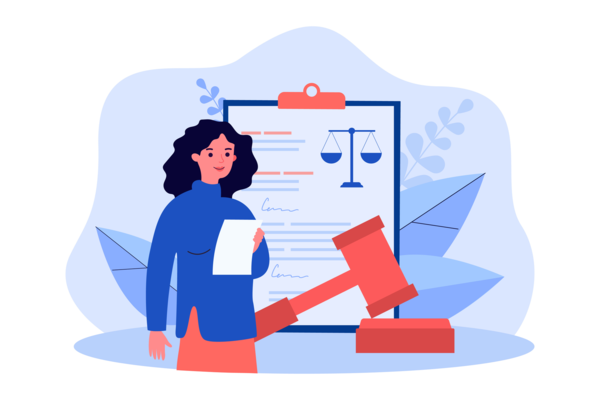Design
Understand how and why design impacts user experience
Guidance, resources, and community to help you use design to create government websites that meet customer needs, work well on any device, and follow federal web requirements.
Related Policy
21st Century Integrated Digital Experience Act

Design: essential knowledge
-
An introduction to design
How to design government websites that meet customer needs, work well on any device, and follow federal web requirements.
-
An introduction to design systems
If your organization needs to ensure compliance with a design standard or align to a brand, a design system can help you achieve those goals more easily than building a site from scratch. Learn how a design system can help you and what you need to know to get started.
-
USWDS design principles
Earn trust by following consistent design principles.
-
Understanding design in 10 questions
Learn how the discipline of design can help your agency improve customer experience.
-
Bringing design in-house
What is design, who are designers, and how can they help your agency? Learn how to build a design team that can help your agency solve “wicked problems” and be more innovative.
Design events
Design news
A journey of improvement: Creating a self-assessment for digital experience
Memo M-23-22 from the Office of Management and Budget provides guidance to federal agencies on delivering a digital-first public experience. To quantify its compliance with the memo, the Open Data, Design, and Development team at the Department of the Interior created and conducted a self-assessment of its digital products. The team used a scoring spreadsheet to measure compliance across categories like accessibility, design consistency, and mobile responsiveness. The results helped the team develop a plan to prioritize improvements and engage with leadership for support on other initiatives.— via Office of Natural Resources Revenue

Digital front door: Expanding access to VA
More Veterans are turning to the U.S. Department of Veterans Affairs (VA) for healthcare and benefits, accessing these services online through tools like the VA Health and Benefits mobile app and VA.gov. With over 2.28 million app downloads and 17.8 million monthly visitors on VA.gov, these digital tools provide faster, easier, and more inclusive access to VA services. Learn more about how these technologies are often Veterans’ first interaction with VA by watching their latest video, Digital Front Door: Expanding Access to VA.— via U.S. Department of Veterans Affairs

Case study: Removing barriers to applying for a presidential pardon
At the Department of Justice, Access DOJ and the Office of the Pardon Attorney (PARDON) partnered to simplify and streamline the presidential pardon application process. By conducting usability testing and gathering feedback, they identified key issues with the existing application, such as its complexity and length. See how redesigning the forms to be more accessible and understandable led to a more efficient process for both applicants and staff.— via Department of Justice

Equity study reaches 4,000 participants
Launched last fall, the General Services Administration equity study on remote identity proofing aims to determine if biases exist in the algorithms used for online identity verification. The study has now reached its goal of recruiting 4,000 participants from diverse communities, and experts are ready to begin analysis of the data. Learn how the team at GSA plans to conduct this data analysis, and how their findings will lead to improved equitable services delivery in technology across the government.— via General Services Administration

One year with the new USAGov
It has been a year since USA.gov and USAGov en Español were relaunched using human-centered design principles. Using task backlog, the USAGov team has addressed content gaps, improved discoverability, and implemented technical updates. Through usability tests, visitor comments, and click behavior the team was able to unravel and respond to user feedback and unmet needs, leading to noticeable increases in visitor satisfaction and task accomplishment. Moving forward, the focus will shift to enhancing public engagement with the government, improving the search for benefits-related content, and exploring interactive and personalized user experiences.— via USA.gov

Resources on Design
-
An introduction to design
How to design government websites that meet customer needs, work well on any device, and follow federal web requirements.
-
Making the big move: Search in support of federal web modernization
In this special report, we discuss a website redesign’s nine phases and their impact on search.
-
An introduction to design systems
If your organization needs to ensure compliance with a design standard or align to a brand, a design system can help you achieve those goals more easily than building a site from scratch. Learn how a design system can help you and what you need to know to get started.
-
Embedding Equity in Civic Design to Transform Customer Experience
This case study describes how two civic designers at different agencies embed equity in civic design to transform federal customer experience.
-
Lessons from the 2021 Federal Plain Language Report Card
This event recap highlights best practices, a short case study video, and examples of federal web content that received both high and low scores in the 2021 Plain Language Report Card.
-
Multilingual Huddle: Designing for Translation
In this webinar, Laura Godfrey and Fedora Braverman share tips for translating content in the digital context.
-
Deceptive Design: How to Identify and Combat Consequence Design
Consequence design is part of everyday life. Deceptive techniques like “dark patterns” and “hostile design” trick people into taking unintended actions — learn how to prevent them from sneaking into our design work.
-
Addressing Barriers to User-Centered Design
An overview of the most common barriers and how federal agencies might address them.
-
The basics of human-centered design in government
How the Lab at OPM drives innovation through design education
-
U.S. Web Design System
A design system for the federal government that makes it easier to build accessible, mobile-friendly government websites for the American public.
Tools and Services
-
18F
We help government agencies fix technical problems, build products, and improve how government serves the public through technology.
-
Presidential Innovation Fellows
We help government agencies fix technical problems, build products, and improve how government serves the public through technology.
-
U.S. Digital Service
We deploy small, responsive groups of designers, engineers, product managers, and bureaucracy specialists to work with and empower civil servants.
-
10x
Provides funding for new technology projects or products across government, from the TTS office of investments.
-
DotGov Registry
We make it easy to register and manage a .gov domain for US-based government organizations.
-
The Lab at OPM
A team of designers with diverse backgrounds that help agencies address complex challenges and build human-centered design capacity across the federal government.
-
U.S. Web Design System
A toolkit of principles, guidance, and code that helps agency digital teams build accessible, mobile-friendly government websites for the American public.
-
Directory of services, tools, and teams
Free and low-cost shared services and tools offered by the GSA and other agencies.
More News and Events on Design
273 posts
A journey of improvement: Creating a self-assessment for digital experience
Memo M-23-22 from the Office of Management and Budget provides guidance to federal agencies on delivering a digital-first public experience. To quantify its compliance with the memo, the Open Data, Design, and Development team at the Department of the Interior created and conducted a self-assessment of its digital products. The team used a scoring spreadsheet to measure compliance across categories like accessibility, design consistency, and mobile responsiveness. The results helped the team develop a plan to prioritize improvements and engage with leadership for support on other initiatives.— via Office of Natural Resources Revenue

Digital front door: Expanding access to VA
More Veterans are turning to the U.S. Department of Veterans Affairs (VA) for healthcare and benefits, accessing these services online through tools like the VA Health and Benefits mobile app and VA.gov. With over 2.28 million app downloads and 17.8 million monthly visitors on VA.gov, these digital tools provide faster, easier, and more inclusive access to VA services. Learn more about how these technologies are often Veterans’ first interaction with VA by watching their latest video, Digital Front Door: Expanding Access to VA.— via U.S. Department of Veterans Affairs

Case study: Removing barriers to applying for a presidential pardon
At the Department of Justice, Access DOJ and the Office of the Pardon Attorney (PARDON) partnered to simplify and streamline the presidential pardon application process. By conducting usability testing and gathering feedback, they identified key issues with the existing application, such as its complexity and length. See how redesigning the forms to be more accessible and understandable led to a more efficient process for both applicants and staff.— via Department of Justice

Equity study reaches 4,000 participants
Launched last fall, the General Services Administration equity study on remote identity proofing aims to determine if biases exist in the algorithms used for online identity verification. The study has now reached its goal of recruiting 4,000 participants from diverse communities, and experts are ready to begin analysis of the data. Learn how the team at GSA plans to conduct this data analysis, and how their findings will lead to improved equitable services delivery in technology across the government.— via General Services Administration

One year with the new USAGov
It has been a year since USA.gov and USAGov en Español were relaunched using human-centered design principles. Using task backlog, the USAGov team has addressed content gaps, improved discoverability, and implemented technical updates. Through usability tests, visitor comments, and click behavior the team was able to unravel and respond to user feedback and unmet needs, leading to noticeable increases in visitor satisfaction and task accomplishment. Moving forward, the focus will shift to enhancing public engagement with the government, improving the search for benefits-related content, and exploring interactive and personalized user experiences.— via USA.gov

Progress towards delivering a digital-first public experience
Each year, more than 400 million individuals, families, businesses, organizations, and local governments get information and services from about 430 federal agencies and sub-agencies. The Biden-Harris administration is driving a bold vision for how government agencies serve their customers digitally with OMB’s ten-year roadmap for a modern digital experience. Agencies have already made significant strides. Learn about recent successes by the IRS, CDC, NASA, and FEMA, and how OMB will continue to collaborate with agencies to ensure ongoing improvement in digital government services.— via The White House

Justice department to publish final rule to strengthen web and mobile app access for people with disabilities
On April 8, Attorney General Merrick B. Garland signed a final rule under Title II of the Americans with Disabilities Act (ADA) to ensure the accessibility of web content and mobile applications for people with disabilities. This final rule clarifies the obligations of state and local governments to make their websites and mobile applications accessible. Learn more about this rule and why the Attorney General believes it will “break down barriers that have kept people with disabilities from fully participating in American Life.”— via Department of Justice

18F practices in action (spoiler: this stuff works)
How well do 18F software development practices work? The 18F team reflected on a recent project for the Cybersecurity and Infrastructure Security Agency (CISA) .gov registry to gauge the effectiveness of six recommendations aligned with what they actually did.— via 18F

How USAGov uses data to improve content
Each month, USAGov’s content designers spend many hours ensuring that the content on USA.gov and USAGov en Español is up-to-date, accurate, and meets user needs. Learn how their team does holistic reviews of each topic section based on a rolling calendar with the goal of updating all content at least every 6 months.— via USA.gov

Search.gov year in review: 2023 report
Learn what types of information people searched for on federal websites in 2023, see emerging trends the team is exploring to improve customers’ search experience in 2024, and check out three new updates. The data tab provides insightful summaries for 13 popular topic areas—and lists the public’s top 25 search terms, in their own words, for each.— via Search.gov

Spring 2024 Community Summit
Equity in action: GSA’s study on remote identity-proofing technologies
The Biden-Harris President’s Management Agenda (PMA) emphasizes an effective, equitable and accountable government. As part of this effort, the General Services Administration (GSA) is conducting a study on the equity of remote identity proofing. The study aims to assess and improve the accessibility and equity of remote identity verification technologies such as facial matching systems. Learn more about the context, purpose, and progress of the study, and how it supports GSA’s goal of enhancing digital government services and prioritizing equitable design practices.— via Performance.gov

Maximizing impact of federal websites: Integrating metrics with annual goals and policies
The Open Data, Design, and Development (ODDD) team discusses how OMB’s recent memo, Delivering a Digital-First Public Experience (M-23-22), inspired them to reassess their metrics plan to harmonize with policies governing federal public websites.— via Office of Natural Resources Revenue

Customer experience and human-centered design
Customer experience is the application of design within a business context to craft the human experience.




